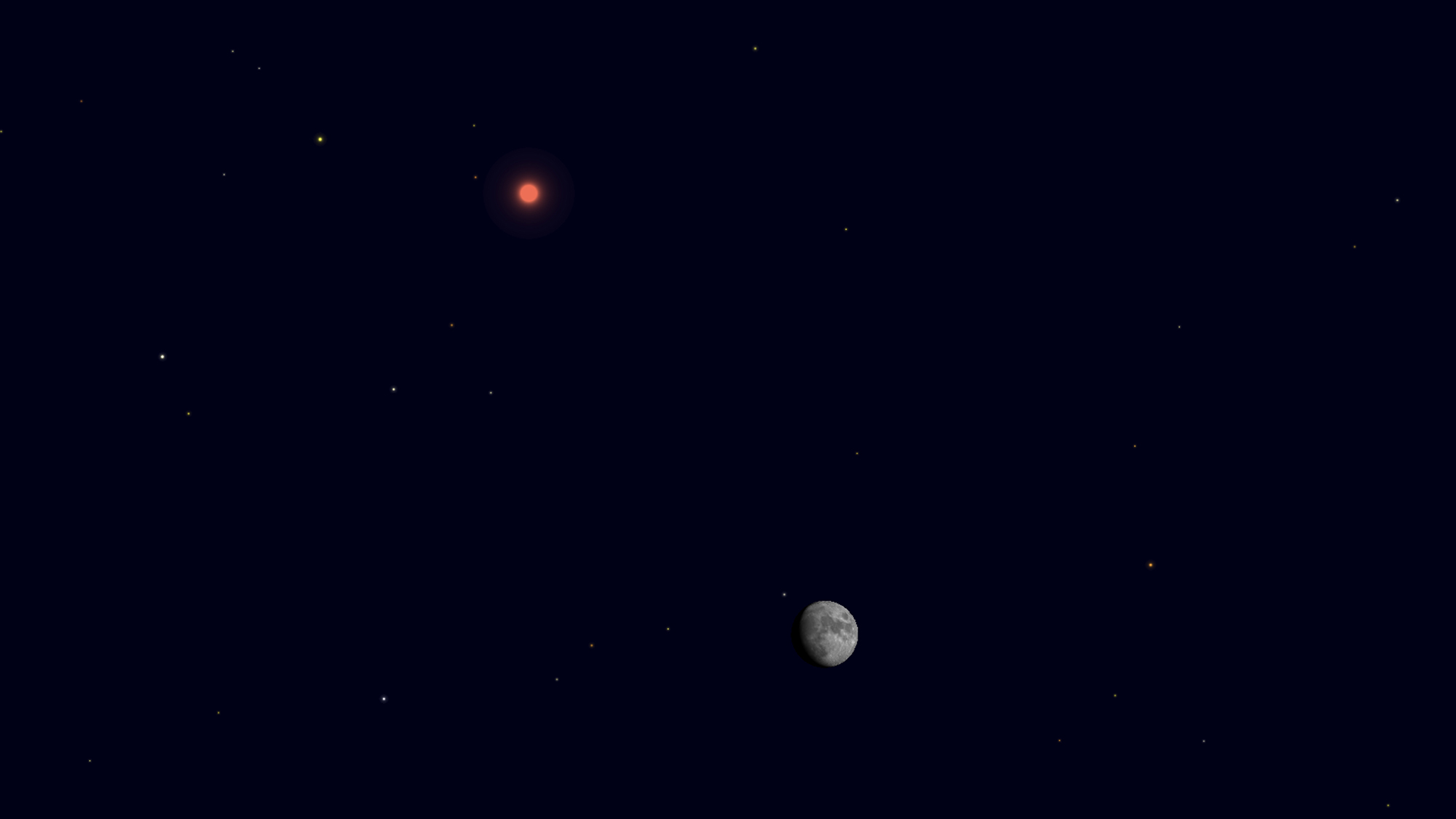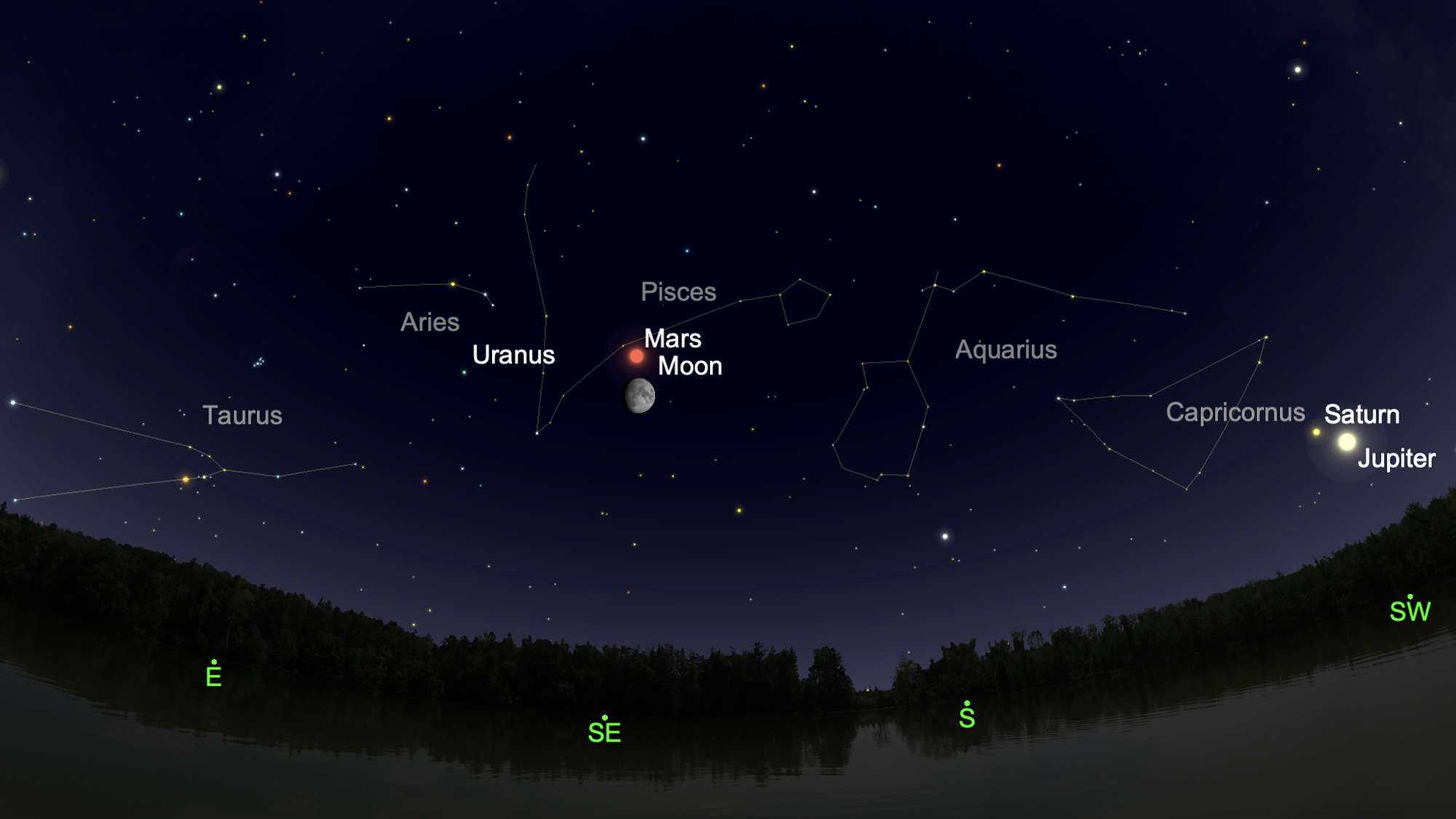
The Wednesday before Thanksgiving is sometimes referred to as "Getaway Day" in the United States. Normally this is one of the most traveled-days of the year, as millions board planes and trains or travel by car in order to spend Thanksgiving with family and friends. Unfortunately, the ongoing pandemic will probably significantly reduce the number of travelers this year.
But if still do plan to travel — and even if you don't — if the weather is clear in your area on Wednesday evening (Nov. 25), you will have an opportunity to see what probably are, for most people, the two of the "most asked for" objects to look at through a telescope: the moon and Mars. So far as Mars is concerned, recall that during the first half of October, that planet made the closest approach to Earth that it will make until the year 2035. At that time, Mars was absolutely dazzling, holding forth as the third brightest object in the night sky next to the moon and Venus.
But things have quickly changed over the past six or seven weeks.
Related: Get ready for the 'Great Conjunction' of Jupiter and Saturn

A noticeable fade down
About 45 minutes after sunset on Wednesday evening, look toward the east-southeast sky and about one-third of the way up from the horizon you will see a waxing gibbous moon, four days past first-quarter phase and five days before full. Situated about 5 degrees above and slightly to the moon's left you'll see Mars, which continues to steadily draw away from the Earth.
While we call Mars the "Red Planet," you will see that in actuality it shines with more of a yellowish-orange tint. That coloration is due to rusting iron-oxide that covers much of the Martian surface. Here on Earth we have something quite similar to that in the colors of the famous Painted Desert in Arizona. Still, the yellow-orange color apparently suggested blood to ancient skywatchers, and since the "wandering stars" that we know as planets were named for ancient deities, it seemed fitting to name this topaz wanderer after the god of war.
On Nov. 1, Mars blazed at -2.1 magnitude — brighter than Sirius, the brightst star in the night sky — while at a distance of 43.7 million miles (70.4 million kilometers) from Earth. But on Wednesday night, it will be 12.5 million miles (20.1 million km) farther away from us and consequently will have dimmed noticeably to magnitude -1.3, or only about half as bright as it appeared on Nov. 1.
Get the Space.com Newsletter
Breaking space news, the latest updates on rocket launches, skywatching events and more!
Make no mistake about it, however; Mars is still a brilliant object, appearing only a trifle dimmer than Sirius. But when you compare it to what it was in early October when it loomed much closer, it has gone through quite a comedown.
Mars now appears more than three times fainter, and by the end of November in telescopes its disk will appear 27% smaller compared to early October.
Changing orientation
Nonetheless, both the moon and Mars will still make for an attractive and eye-catching tableau wherever the sky is clear. And it will be most interesting to watch how their orientation to each other will appear to change during the course of the night. At around 6:15 p.m. local time, they will appear high above the southeast horizon, with Mars standing directly above the moon. When they appear highest in the sky — due south — at 9 p.m., Mars will appear above and slightly to the moon's right. And by around 2 a.m. (early Thanksgiving morning) they'll be hovering low above the western horizon, getting ready to soon set side-by-side, the moon appearing to Mars' left.
From here on, Mars will continue to shrink and get dimmer as its distance from Earth increases. By midwinter, even a large telescope will have difficulty in bringing out any surface features. By then, Mars will only be a tiny dot.
Joe Rao serves as an instructor and guest lecturer at New York's Hayden Planetarium. He writes about astronomy for Natural History magazine, the Farmers' Almanac and other publications. Follow us on Twitter @Spacedotcom and on Facebook.
Join our Space Forums to keep talking space on the latest missions, night sky and more! And if you have a news tip, correction or comment, let us know at: community@space.com.

Joe Rao is Space.com's skywatching columnist, as well as a veteran meteorologist and eclipse chaser who also serves as an instructor and guest lecturer at New York's Hayden Planetarium. He writes about astronomy for Natural History magazine, Sky & Telescope and other publications. Joe is an 8-time Emmy-nominated meteorologist who served the Putnam Valley region of New York for over 21 years. You can find him on Twitter and YouTube tracking lunar and solar eclipses, meteor showers and more. To find out Joe's latest project, visit him on Twitter.









